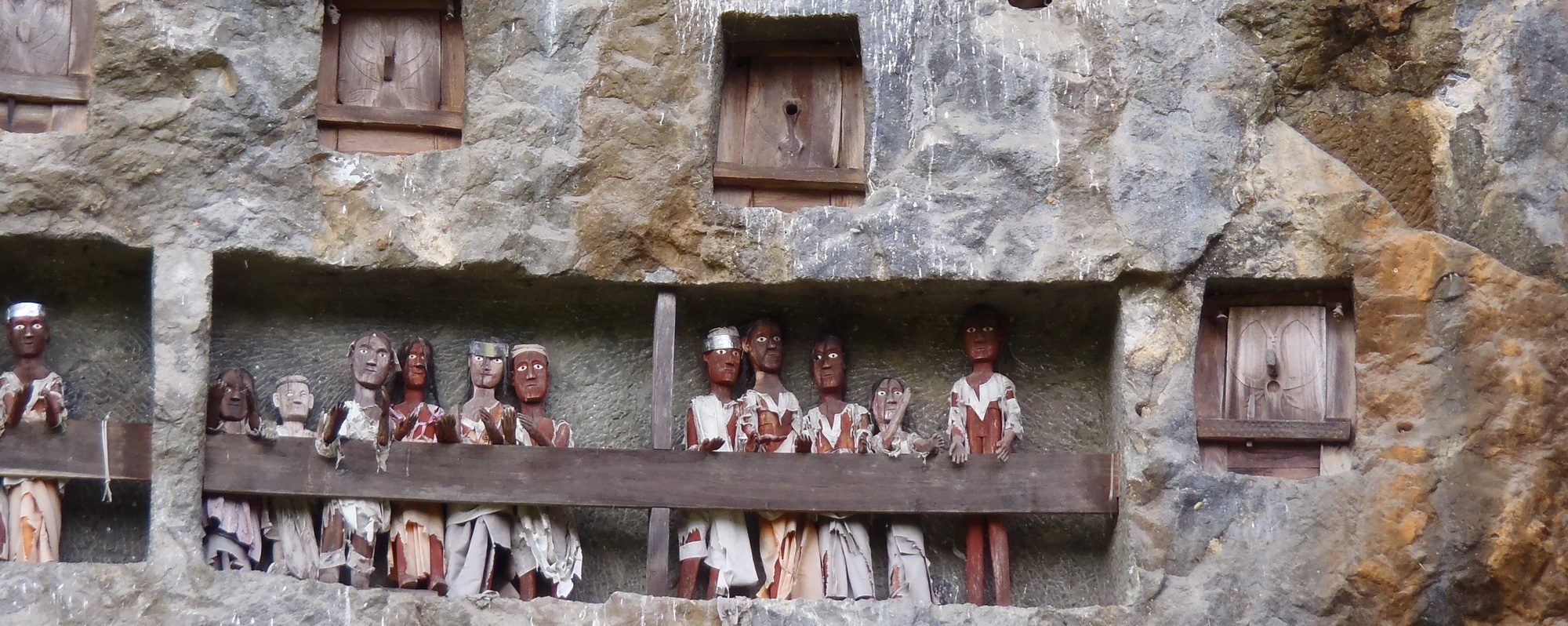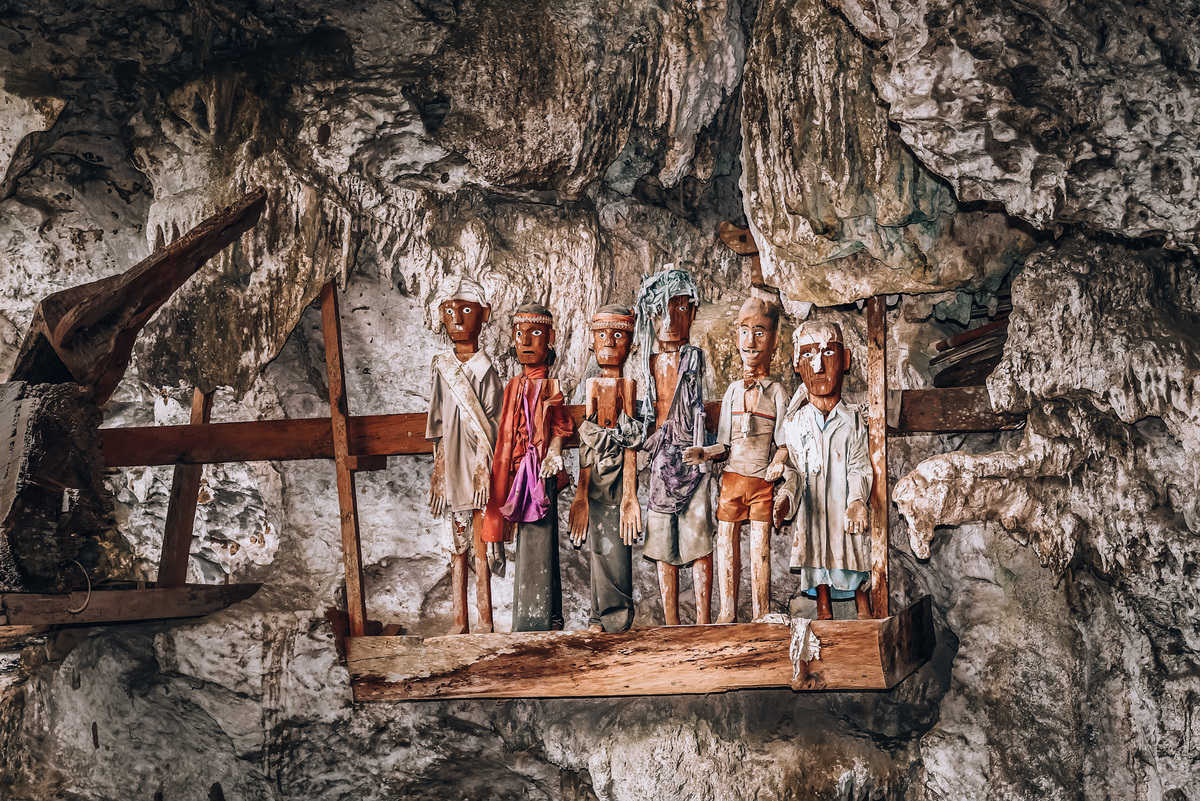"Discovered" and opened to the world from their long isolation only since the beginning of the last century, the Toraja ethnic group, living in the northern mountains of South Sulawesi, until today still adhere to their age-old beliefs, rituals and traditions. Uniquely, to the Torajans, death has always been a central theme, where in addition to the well-known elaborate funeral ceremonies, Torajans also honor the deceased by carving out the likeness of the dead, known as Tau-tau.
In the Torajan culture, Tau-tau is an effigy that represents the person who has passed away. Carved from wood or bamboo, Tau-tau statues are usually found near where the body of the deceased has been laid to rest. Believed to have originated in the 19th century, these effigies were once produced only for aristocrats and the wealthy to reflect status and opulence. As a representation of the deceased, Tau-tau are also regarded as guardians of the tomb as well as protectors of the living. In so doing, they preserve the link between the dead and the living.
The word Tau-tau is derived from the term “Tau” which means human, and the repetition of the word in the local as well as in the Indonesian language often means “something that resembles”. Therefore, tau-tau can be defined as something that resembles humans. Although they are carved based on the physical form of the deceased, Tau-tau represent their spirits that are believed to continue to exist in the afterlife (a realm known as Poyo in the Torajan Culture).
According to the Torajan belief (called Aluk Todolo), every person who has passed away will enter Poyo, the realm where all spirits gather. However, they can only enter Poyo when they have passed all correct funeral ceremonies in accordance with their social status. Therefore, the Tau-taus must be made of materials that are suited to the social status of the deceased. Failing which, will result in the spirit being stranded or lost wandering between two worlds. This is the reason why holding the correct and perfect funeral ceremony as well as the creation of the Tau-tau for the deceased are crucial in the life cycle of every Torajan.
For those of lower social status, Tau-tau may be made of bamboo, while for the middle-class Tau-taus are made of Sandalwood or Randu wood; whereas for the highest class (or royalty), the material used for Tau-tau is made from the Jackfruit tree. Additionally, buffalo horn or bones are often used for the eye balls.
The creation of a Tau-tau must also follow precise steps in its carving following specified rituals, starting right from the felling of the tree for its wood. While, during the carving process, the artisan also needs to work near the body of the deceased. For the funeral ceremony, the Tau-tau is dressed in traditional costume. The male Tau-tau often wears sarong, while the female Tau-tau are dressed in the traditional ‘kebaya’ blouse. Tau-taus are also decorated with head ornaments, a purse filled with silver and gold pieces, a sacred knife, and other heirlooms closely associated with royalty and divinity.
When the funeral ceremony is completed, the Tau-tau is placed on a balcony over the cliff or on the outer part of the cave where the body of the deceased has been placed. Such “hanging cliffs” can be visited by the village of Londa. The Torajans believe that the spirit of the dead enters the Tau-tau and continues to live on, thus maintaining the essential link between the dead and the living. Although nowadays most Torajans have converted to Christianity, Tau-tau remains an important symbol in its culture.



















